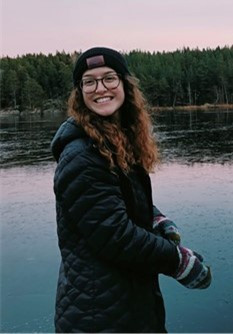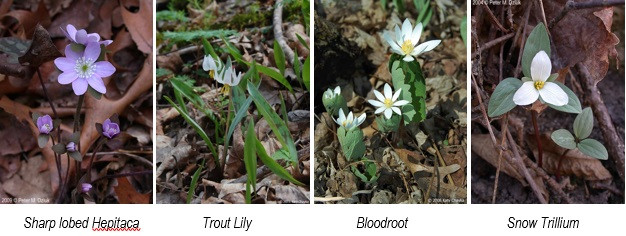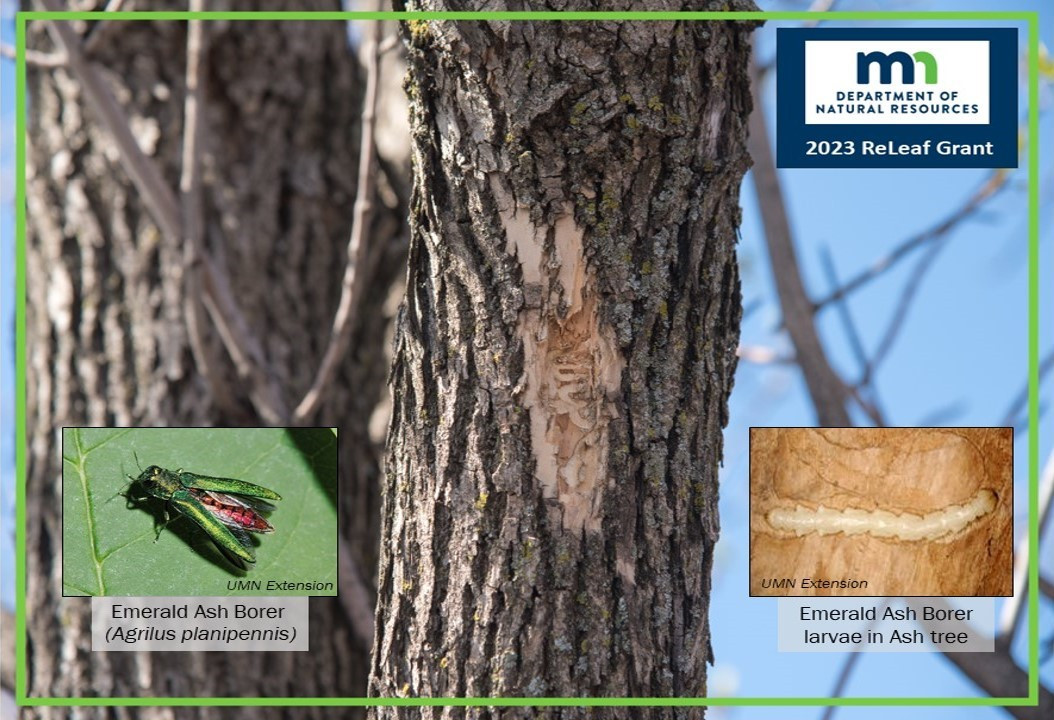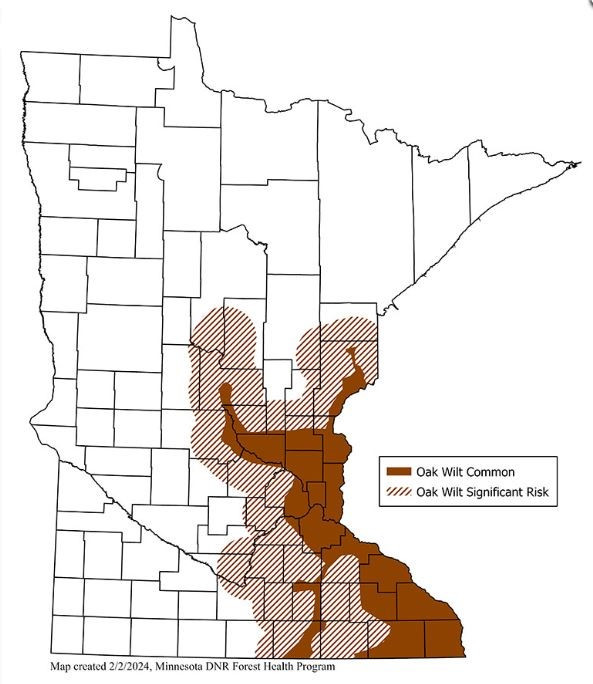Aviva joined the District in April of 2024 as the Outreach Coordinator. She holds a Bachelor's degree in Environmental Studies and Geography from Gustavus Adolphus College in St. Peter, MN. Aviva supports communication and outreach efforts to promote District programs and activities while fostering partnerships, collaboration, and engagement across the District. Aviva can be reached at
Spring is upon us! Some of the first plants to emerge are woodland wildflowers known as spring ephemerals. These short lived gems take advantage of the spring sunlight by completing their life cycles before the forest canopy leafs out for the season. In addition to their beauty, spring ephemerals provide critical resources for pollinators as they emerge in the early spring. Common ephemerals include Hepatica, Trout Lily, Bloodroot, and Trilliums.
Among the first plants to green up in spring, garlic mustard outcompetes native spring ephemeral wildflowers, diminishing early season resources for pollinators and degrading forest health. Garlic mustard has a two year (or biennial) life cycle, producing a short basal rosette without flowers in the first year and a tall "bolting" stalk in the second year. It's important to pull these weeds before they produce seed in the second year. Treat garlic mustard by pulling the whole plant and the roots by hand. If you pull garlic mustard before it flowers, leave the material on the ground to decompose. If you pull it after flowering or seed production, bag it and dispose of it properly so that no seeds are spread.
Learn tricks to help identify and treat garlic mustard from the MN Dept of Ag and Friends of the Mississippi River. Help us protect the beautiful and diverse forests of Anoka County by pulling garlic mustard! For more information contact Logan Olson, Restoration Technician, at
Dreaming of warmer weather and gardening season? Applications are now open for Fall 2024 individual Lawns to Legumes grants! Minnesota residents are eligible to apply for $400 reimbursement grants for creating native pollinator habitat on their properties. Projects can take the form of small pocket plantings, larger pollinator meadows, or pollinator friendly lawns. Grant recipients are selected by a lottery system. The application closes on May 15th. Check out the MN Lawns to Legumes page for a plethora of resources on pollinator garden design, selecting native plant species, and maintaining pollinator habitat.
Note: Individual Lawns to Legumes grants are distributed at the state level, not by ACD. You can find contact information for assistance with these programs at the links above. For more information contact Logan Olson, Restoration Technician, at
Emerald Ash Borer (EAB) is an invasive insect that has killed millions of Ash trees throughout North America. Since 2009, EAB has been detected in 46 counties in Minnesota, including Anoka County. MN is home to over 1 billion Ash trees, all of which are vulnerable to EAB infection.
Trees affected by EAB dry out and rot quickly, creating public safety hazards. If allowed to decay, these conditions can cause trees to become dangerous to manage. Removing ash trees in high-traffic areas including along public trails and neighborhood streets is a top safety priority. Learn more about Emerald Ash Borer on the ACD Website.
Oak Wilt is a fungal disease that affects all species of oak trees. It is spread by sap beetles and through the tree's root systems. The disease affects Oak species differently; it can kill Red Oak trees in 2-3 months whereas White Oaks can live up to 20 years after becoming infested. It's important to know the signs of Oak Wilt to prevent further forest damage. Learn more about Oak Wilt on the ACD Website.
Help Stop the Spread!
Avoid cutting and pruning Ash trees from May 1 - September 31 as EAB insects are most active during this time. Do not transport firewood offsite from where it was collected. The Twin Cities metro and much of Eastern, MN is within an EAB quarantine zone and transporting firewood out of these areas risks spreading EAB.
Avoid cutting and pruning Oak trees from April 1 through July 31 as sap beetles are most active during this time. Treat spring and summer tree wounds with a water based paint or pruning wound sealer to avoid attracting sap beetles. Do not transport firewood off the site where it was collected. The Twin Cities metro and much of east central Minnesota is infested with Oak Wilt. Transporting firewood out of this area risks spreading this forest disease.
The unseasonably warm winter extends the 'don't prune' window and it probably starts in March for 2024.
ACD was a recipient of the MN Department of Natural Resources ReLeaf Community Forestry Grant to help efforts to manage Oak Wilt and EAB in Anoka County. A variety of tree species will replace those affected by Oak Wilt in the Anoka Nature Preserve (ANP), including treating Common buckthorn in 2024-25 to free up space for new trees to be planted in 2026. Ash trees at Kings Island in the City of Anoka will be removed in early 2024 and new trees will be planted in 2025. Planting at both of these sites will be completed with the help of volunteers. If you have interest in helping out as a volunteer, sign up here!
For more information contact Logan Olson, Restoration Technician, at
Dreaming of warmer weather and gardening season? Applications are now open for Fall 2024 individual Lawns to Legumes grants! Minnesota residents are eligible to apply for $400 reimbursement grants for creating native pollinator habitat on their properties. Projects can take the form of small pocket plantings, larger pollinator meadows, or pollinator friendly lawns.
Grant recipients are selected by a lottery system. The application closes on May 15th. Check out the MN Lawns to Legumes page for a plethora of resources on pollinator garden design, selecting native plant species, and maintaining pollinator habitat.
Note: Individual Lawns to Legumes grants are distributed at the state level, not by ACD. You can find contact information for assistance with these programs at the links above.






